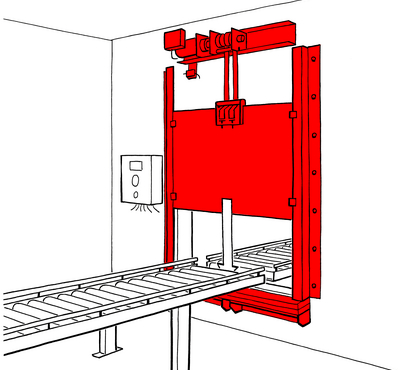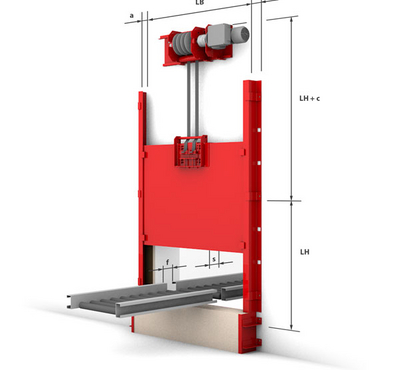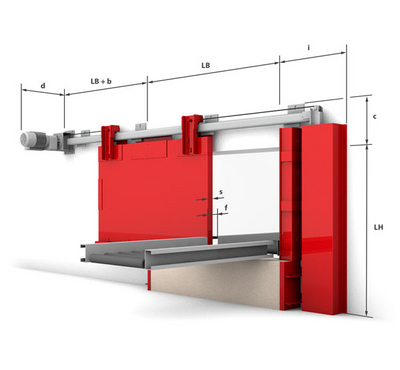
Product description
The Global Conveyor Closure (GCC) is a compact conveyor system closure in element design for separate and continuous conveyor systems. It only requires a small overlap on the wall surrounding the opening. For discontinuous conveyor systems, just a short interruption of the conveying line (separation point) is necessary thanks to the very slim sheet metal of the damper. There is a wide range of surface design options for the sliding damper - from the cost-efficient basic version made of untreated fire protection plates to surfaces coated with emulsion paint or to high-quality cladding of the damper with galvanized steel sheet (optionally powder-coated or in stainless steel).

Type | Fire protection closure as part of track-bound conveyor systems |
Proof of usability | European Technical Assessment - ETA |
Closing direction | From top to bottom • from left to right • from right to left |
Fire resistance | EI1 30 • EI1 60 • EI1 90 • tested according to DIN EN 1366 |
Closing cycles | C5 number of closing cycles 200,000 |
Re-opening | electromotive (standard) |
Conveyor system | Interrupted conveyor system • Sloping track • Continuous belt conveyor system • Continuous travelling carriages • Continuous roller conveyor system • Continuous suspension chain conveyor |
Downloads
Required wall quality | |
|---|---|
Masonry | d ≥ 150 mm |
Concrete | d ≥ 150 mm |
Aerated concrete | d ≥ 150 mm |
Panelled steel structure | according to DIN 4102-4 |
Approved range (max 10,08 m²) | |
|---|---|
LW | 3600 mm |
LH | 4200 mm |
Technical feasibility | |
|---|---|
LW | 3600 mm |
LH | 4200 mm |


